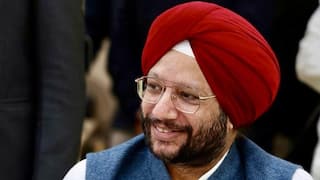'The Diary Of West Bengal' Sparks Excitement: Audience Enthusiastic, Critics Praise It
Released in theaters on August 30, 'The Diary of West Bengal' has quickly captivated audiences with its compelling story and strong performances.

Released in theaters on August 30, 'The Diary of West Bengal' has quickly captivated audiences with its compelling story and strong performances. Viewers have responded enthusiastically, showering the film with praise. Actors Yajur Marwah, Ramendra Chakarwarti, and Arshin Mehta are receiving accolades for their performances, while director Sanjog Mishra is commended for his adept direction.
The film's narrative and its execution are sparking widespread discussion. It features several striking scenes that are both gripping and chilling. The film's VFX is also noted for its impressive quality, enhancing the overall viewing experience. Critics had already praised the film prior to its release.
In its portrayal of the effects of Rohingya Muslims and Bangladeshis on Hindus in West Bengal, 'The Diary of West Bengal' has drawn comparisons to 'The Kerala Story' and 'The Kashmir Files.' It also provides insight into media practices and the state's governmental actions during that era.
Produced by Raj Mishra and Wasim Rizvi, with music by Nadeem Ahmad, Afsar Ali, and A.R. Dutta, the film showcases Sanjog Mishra's directorial vision.
The review of the film reads as, "Sanoj Mishra's direction in 'The Diary of West Bengal' is ambitious, tackling a complex and sensitive issue. However, the execution does not fully realize the film’s potential. The screenplay aims to be impactful but often feels heavy-handed, lacking the subtlety needed to effectively address the subject matter. The film’s pacing is inconsistent, with some scenes dragging on unnecessarily while others, which could have enriched the narrative, are rushed."
"The dialogue is another area where the film falters. Conversations between characters often seem forced and didactic, focusing more on delivering the film’s political message than on fostering authentic interactions. This approach detracts from the viewing experience, making the film feel more like a political statement than a nuanced examination of a complex issue."
Related Video
Salman Khan Birthday: Salman Khan Celebrates 60th Birthday in Grand Style at Panvel Farmhouse





































